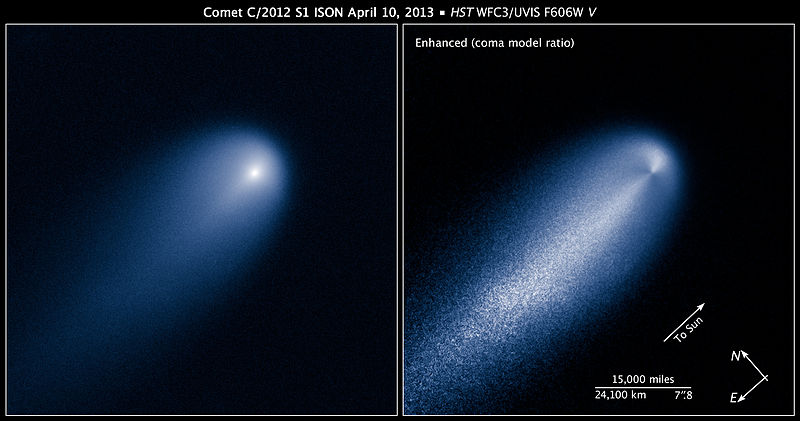The comet C/2012 S1, or ISON as it is called, will pass close to the sun this November. The big question is whether it will put on a big show for the unaide eyes of everyone or just be visible to those looking through telescopes. At the moment is it is showing off for those watching it through such aids: Green light for ISON: Comet blazes in stunning shots – PhotoBlog
The comet was discovered on September 21, 2012 by Vitali Nevsk of Vitebsk, Belarus and Artyom Novichonok of Kondopoga, Russia.
Here is a blog dedicated to the comet: WAITING FOR ISON. It offers lots of resources about this big dirty snowball.
Here are some Hubble images of comet Ison from April 10, 2013:



